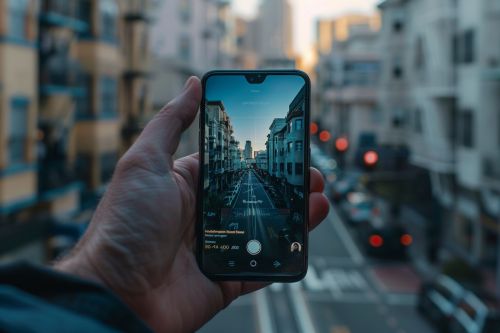

Social media has long stopped being merely platforms for sharing holiday photos or thoughts about your favourite TV series. They have become a powerful tool that shapes opinions, markets, and even politics of some countries.
According to Statista, in 2022, the number of social media users exceeded 4.5 billion individuals and is still rising. This is more than half of the world’s population. To reach this audience, all it takes is to publish content tailored in terms of language and culture to your target group. Explore how to leverage this opportunity!
What is the content localization process on social media platforms?
Content localisation in social media is more than just translating words from one language to another. It is a process of adapting content to a specific market or region. This includes cultural adjustments. Local values, customs, and even a sense of humour should be considered.
The transformed text sounds natural as if it was written by someone who knows and understands the local community. Scrolling through your favourite social media and coming across content that seems to mirror your world creates a pleasant sense of engagement.
On Facebook, personal posts and advertisements are the most common type of content. Localisation on this platform involves translating text, adjusting graphics, videos, and publication timing to fit local habits.
Instagram is a platform for images and short videos. Localisation here applies to the content of the post and its description. Colours, photo composition, and emojis are interpreted differently across cultures, so pay attention to such details.
X
X (former: Twitter) favours short messages. Localising content for this platform requires precision. The message should be straightforward yet engaging for users.
Professionalism dominates on LinkedIn. Localising content on this platform means adapting the language to a formal background and considering the industry-specific vocabulary and business cultural standards of the region.
TikTok
TikTok is a world of visually appealing content based on trends, humour, and originality. Adapting content for TikTok means creating engaging video formats that captivate users.
Why is social media localisation important?
Social media connects people, cultures, and businesses. To do this effectively, they should be based on an understanding and respect for cultural differences.
An international clothing brand launching a campaign on Instagram should tailor its message to each country it intends to advertise in. This goes beyond translating a slogan into various languages; it involves adjusting the images and stories presented so they resonate with the local culture. This might mean changing colour schemes, clothing styles, and even the scenery in photos.
Localisation is not just about adapting visual content. You should also check when your profile expects the highest engagement. Try to find ways to encourage followers to leave a like, comment, or save a particular post. A good strategy is to use local holidays and events to promote products.



Understand your target audience on social media
Getting to know your social media audience is the beginning of a successful advertising campaign. Are you unsure who they are? Start by asking a series of questions: Who most often uses my services? Who will benefit from my product? Am I solving a specific problem or satisfying a particular need? If you are new to the market, envision your ideal customer.
Begin with the basics. Define the demographics of your target group. Consider their age, location, interests, occupation, and socioeconomic status. This information will help you tailor your content more effectively.
Then, think about your approach on specific platforms. TikTok mainly attracts younger generations, whereas LinkedIn gathers professionals. Adapt your strategy accordingly, e.g. focus on storytelling on Instagram and educational content on LinkedIn.
Use the analytical tools available on each platform for your activities. Tools like Audience Insights, Twitter Analytics, or LinkedIn Page Analytics provide valuable data about your readers. They make you understand their basic demographics and detailed statistics about the content they prefer. Regularly analyse this data to determine which posts generate the most engagement and when your audience is most active.
Facebook Pixel is a tool that allows you to track conversions from Facebook, optimise ads, and build more targeted campaigns. On the other hand, Google Trends helps you understand which topics and queries are currently popular and how they may affect interest in your brand.
You can also use larger analytical tools, such as SEMrush or Ahrefs, to understand what topics are popular in your industry and incorporate them into your content marketing strategy.
Analytical tools enable you to track trends in your audience’s interests and behaviours. In social media, changes happen quickly. What worked a few months ago might be outdated now. Continuously test, measure, and adjust your strategies to maintain your audience’s interest.
Once you have collected the data, analyse it in the context of your business goals. If you want to increase sales, see which channels bring the most leads and focus your efforts there. If the goal is brand awareness, concentrate on data showing where your target spends the most time and what content they consume.
Furthermore, explore your customers’ journey: how they interact with your brand and their path from initial contact to purchase. Analytical tools reveal where you might be losing potential customers. Make the necessary adjustments to ensure a smooth purchasing process.
What tools are worth using for social media localisation?
The basic tools for localisation include online translators, such as Google Translate. Although machine translation is becoming more advanced, they cannot still understand context. Machine translations without human revision are useful for quick message translation, but they are incapable of effective localisation. For more complex projects, it is better to use professional translation services.
CMS
Content Management Systems (CMS) allow for easy integration of translations and publishing content in different languages. Some CMS platforms have built-in localisation options, greatly simplifying the process.
CAT
Computer-assisted translation (CAT) tools, such as SDL Trados, MemoQ, or Across, are software programs that support the translation process. They offer various features: terminology databases, translation memories, and quality control modules that help maintain consistency in terminology and style.
TMS
Translation Management Systems (TMS) streamline the translation, localisation, and globalisation process of content. They enable project management, and team coordination, and automate task organization.
Cloud Platforms
Cloud platforms, including Crowdin and Transifex, enable a real-time translation of application or website content and integration.
QA Software
Quality Assurance (QA) software, such as Xbench or Verifika, ensures the quality of translations by detecting linguistic errors, repetitions, and inconsistencies.
Localisation strategies
Cultural localisation involves adapting a product or content to audiences from different cultures, which helps engage viewers and boost sales. Cultural differences include, but are not limited to:
- adapting graphic materials and colour schemes,
- changes in the portrayal of characters and social behaviours,
- considering local customs and adhering to taboos.
Beyond literal translation, consider local dialects, slang, and popular expressions at the time. Occasionally, a full content adaptation (or even replacing a post with another) is necessary to make it understandable to the audience. This requires working with native speakers and linguists.
Technical aspects of localisation include content formatting for SEO to improve search engine rankings (Google, Yahoo, or Baidu). Conduct local SEO research to find out what terms your new audience uses when searching for products or services similar to yours. Ensure that your website and application are optimised for different languages, with proper character encoding and file formats, together with local keywords and metadata.



How can you create and tweak content new various markets?
Creating and adapting content for a new market requires care and insight. Firstly, you should understand the preferences of your new audience. The idea is to capture the spirit of the message and evoke the same emotions, regardless of the language in which the content is written. A thorough analysis will help you understand what resonates with the local audience.
Familiarity
Audiences appreciate content that sounds natural and familiar to them. Personalization might mean adapting examples, case studies, or currency to the local context. Remember also about local holidays, customs, and events; incorporating them into your content will be warmly received by the local audience.
Brand voice
When localising content, be careful not to lose your brand’s distinctive voice. Ensure that any lexical changes do not disrupt your company’s identity. Consistency in messaging maintains a cohesive image and builds trust.
Graphic elements
Colours, images, and even the layout have different meanings in various cultures. Red, for example, may signify happiness in one country and danger in another. Your graphics and colours should always be adapted to each market you operate in.
Local regulations
Countries have various regulations regarding advertising, copyright, and personal data protection. Familiarise yourself with local laws to avoid legal penalties. Some countries have strict restrictions on web content, so before publishing double-check that your content meets all the requirements.
Interface Elements
Localisation does not end with text content. User interface elements, website navigation, and the purchasing process should all be adapted to the customs and preferences of local users.
Avoid these mistakes:
Ditch word-for-word translations. This loses the original content’s meaning. Instead, focus on conveying the intention and significance.
Do not assume what works in one country will be effective in another. Tailor your message to the cultural context.
What is acceptable in one culture may be taboo in another. Be aware of these differences.
Do not neglect optimising content for local search engines and keywords. Popular search results in one language may not have equivalents in another.
Markets and trends change. Regularly update your content to keep it fresh.



Content localisation in social media
For business activity on social media, you should focus on authentic communication. At our translation office, we focus on conveying emotions, intentions, and context, not just translating content.
Our knowledge of local markets allows us to tailor messages to the preferences of communities. We provide consultancy services, helping companies understand cultural diversity and adjust their online communication strategies. As a result, social media posts become more effective, driving engagement and profit.
Trust our experts to make your social media posts resonate directly with the hearts and minds of your international audience. Contact us to learn more.
Images generated by AI.















